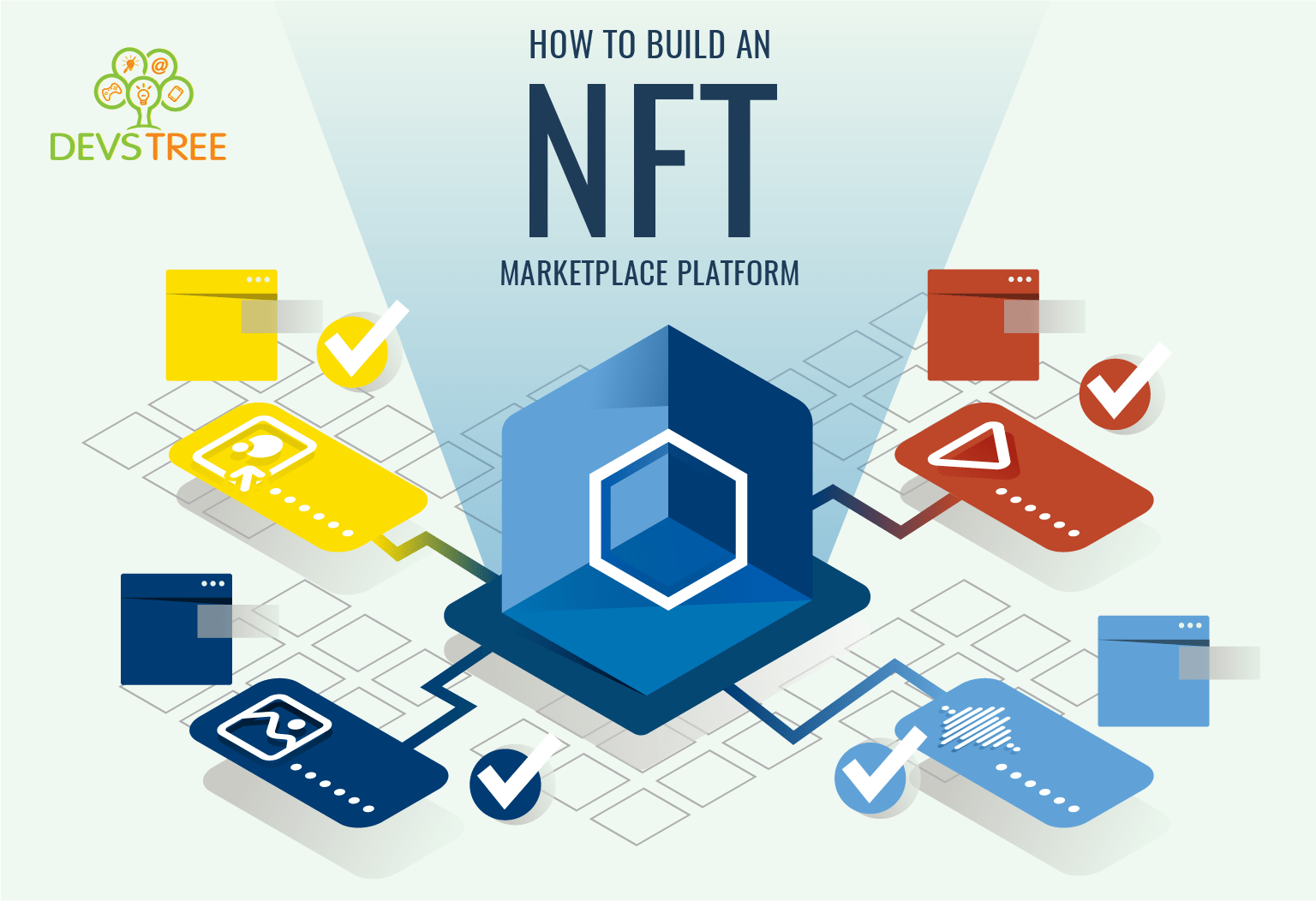Are you looking to build a platform that enables users to buy and sell physical or digital assets? If so, you’ll want to check out the NFT (non-fungible token) marketplace platform. This innovative technology allows users to trade unique digital assets without needing a third party.
This article will provide you with the essential information to get started with this exciting venture. So read on and learn how to build an NFT marketplace platform in 2022!
In 2022, the world will emerge with an exciting new market: the NFT marketplace. This marketplace will allow users to buy and sell easily digital trade assets thanks to blockchain technology.
What is Blockchain?
A blockchain is a digitized, decentralized, public ledger. It is the world’s first digital medium for information storage and transfer. And although blockchains are mostly used to exchange cryptocurrencies, this technology has the potential for many other applications in various sectors of the economy.
A blockchain database is managed autonomously using a transaction log, known as a “blockchain,” which uses cryptography to ensure its integrity. By design, blockchains are inherently resistant to modifying the data records contained in the database.
Blockchain is a technology first developed as the underlying infrastructure for Bitcoin. Today, blockchain is being used to power everything from virtual currencies like Bitcoin to driverless vehicle networks and social media platforms like Steemit. Blockchain represents a new paradigm for distributed computing, eliminating the need for a centralized or trusted third party by managing trust between two parties in a digital environment.
What is NFT?
Non-fungible tokens (NFTs) are items of digital property that can be traded and sold on a blockchain. These tokens come in all forms—from the Cryptokitty to the Edumentum Coins from the FIC Network. Each is unique and cannot be easily interchanged—just like a collectible or antique.
Non-fungible tokens are unique tokens that are not interchangeable. NFTs are often referred to as “collectibles” or digital assets. The most notable example of a non-fungible token is Cryptokitties which was responsible for bringing.
Non-Fungible Tokens (NFTs) are the digitally scarce assets that can be transferred between the users. The most popular application of NFTs is for Crypto collectibles gaming purposes, but it also can be used for other applications.
Non-fungible (NFT) items are like Bitcoin (BTC) and Monero (XMR). They are unique digital tokens that live on the blockchain. You can verify and transfer them.
NFT Marketplace Platform!
NFT (non-fungible token) marketplace partners with several industry-leading projects who share our vision of reinventing how digital goods are created, distributed, and owned. This allows us to explore the creation of unique new marketplaces and deliver more value to the industry. These partnerships position NFT for greater industry-wide adoption.
The NFT marketplace platform is an end-to-end solution for the entire supply chain process. It allows product launches and sales, bounty programs, exchanges of NFTs, optional conversions to other NFT compatible tokens, and settlement via atomic cross-chain transactions.
How Do The NFT Marketplaces Work?
The NFT marketplaces are a new, revolutionary digital marketplace that allows users to buy and sell virtual goods, like blockchain collectible items or in-game items for use in a specific game.
The NFT marketplace works by allowing people to create unique digital assets and trade them on open markets where everyone is welcome. This is the first time digital scarcity has been achieved outside the blockchain world, creating an entirely new economy.
So how do these things work? For all technical details, keep scrolling, but most importantly, buy and sell with us because we’re secure and easy. We use industry-standard methods to keep your account information safe and secure so that you can buy and sell without worry. When you put something up for sale on a marketplace—whether a good or a gift card—we’ll tell you exactly what digital currency that item is worth. And it’s fast and efficient.
Then the blockchain does the rest. It creates a digital token for the item (i.e., a representation of that gift card), which only exists on the Ethereum blockchain. That token represents the item you have for sale and tracks its unspent value over time.
NFT Marketplace Benefits!
The benefits of the NFT marketplace are as follows:
- They serve as a source of liquidity for all of the NFTs on the market.
- By making an account, logging onto the virtual exchange platform, selling their items at defined pricing, and auctioning them off, NFT creators or owners may effortlessly offer their digital assets.
- The purchasers then go through a similar procedure, bidding on the advertised NFTs and purchasing them.
- Platform scarcity is another distinguishing aspect of NFTs, as exchange platforms are designed to allow for the production of fewer NFTs.
- The list-bid-sell-buy mechanism has been extremely beneficial to NFT authors and purchasers.
- These crypto-collectibles command a fair price and have proven to be a reliable source of income for both artists and engineers.
- Payments on the blockchain network are also safe, rapid, and painless.
- NFT Marketplaces are a wonderful way to make money: by charging a transaction charge, popularly known as “gas,” or collecting a commission on each NFT sale.
- OpenSea, for example, has made around $95 million in income on $3.4 billion in transactions.
Development of NFT Marketplaces!
As we move into the digital age, more and more physical goods can be duplicated and distributed on a digital platform. Naturally, this increase in digitalization has permeated data-traded virtual goods as well.
This article presents many of the issues surrounding data traded virtual goods and their impact on their native platform markets. We look at two cases: the classic case of Spore and the newer problem of CryptoKitties (which is an online game that allows players to buy, collect and sell virtual cats).
The results show that for communities of these digitally-distributed propagated commodities to operate at maximum level, a traditional market structure would have to be adopted: such as a Free Market or eBay model.
Blockchain technology is steadily penetrating different spheres of the economy. Each day, new and innovative projects are being created in almost all areas: from finance to FINTECH, from communication to transport, from tourism to entertainment, and from education to art.
The technology opens up great prospects for each project. It enables you to conduct processes faster and more transparently.
Conclusion!
NFT (non-fungible token) marketplace partners with several industry-leading projects that share our vision of reinventing how digital goods are created, distributed, and owned. These partnerships position NFT for greater industry-wide adoption.
This allows us to explore the creation of unique new marketplaces and deliver more value to the industry. This new type of digital marketplace has the potential to revolutionize how we manage our finances and offers immense benefits for both users and creators alike.

